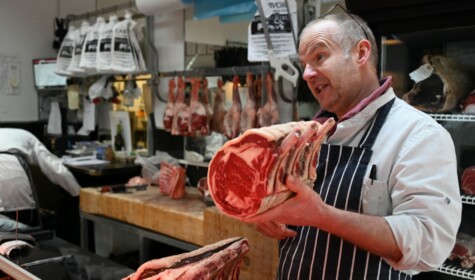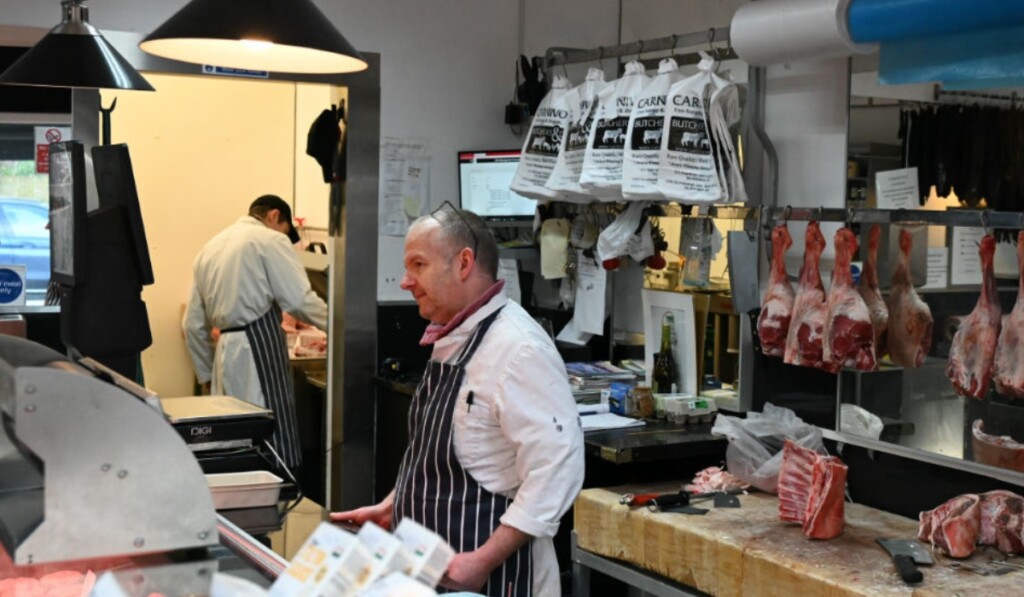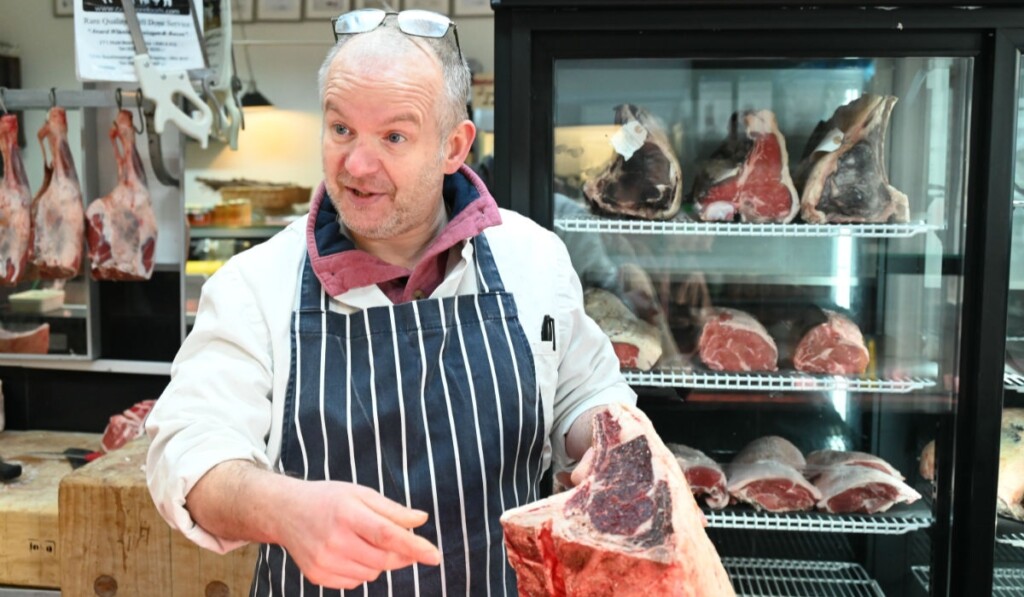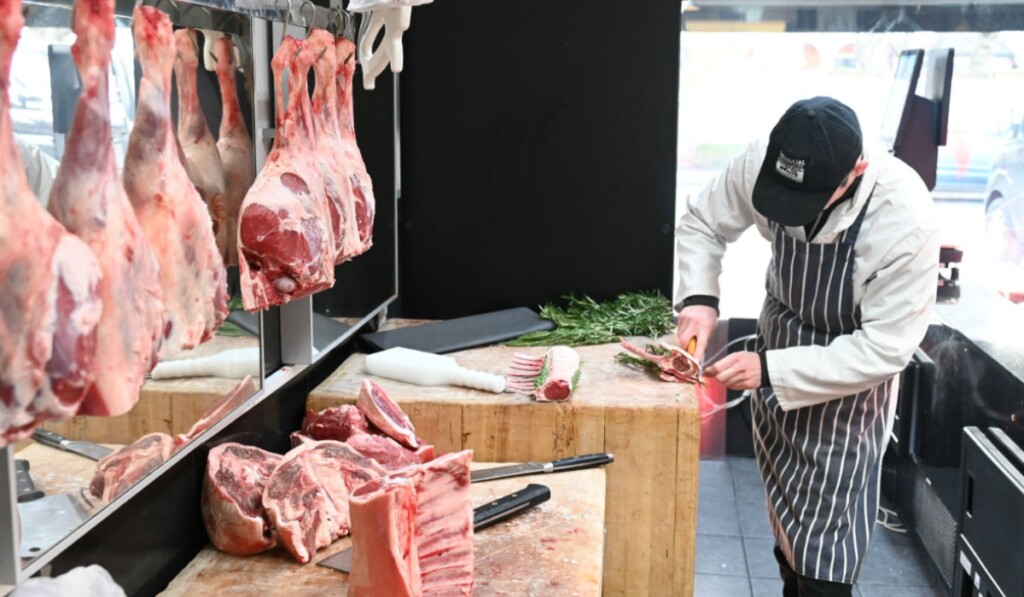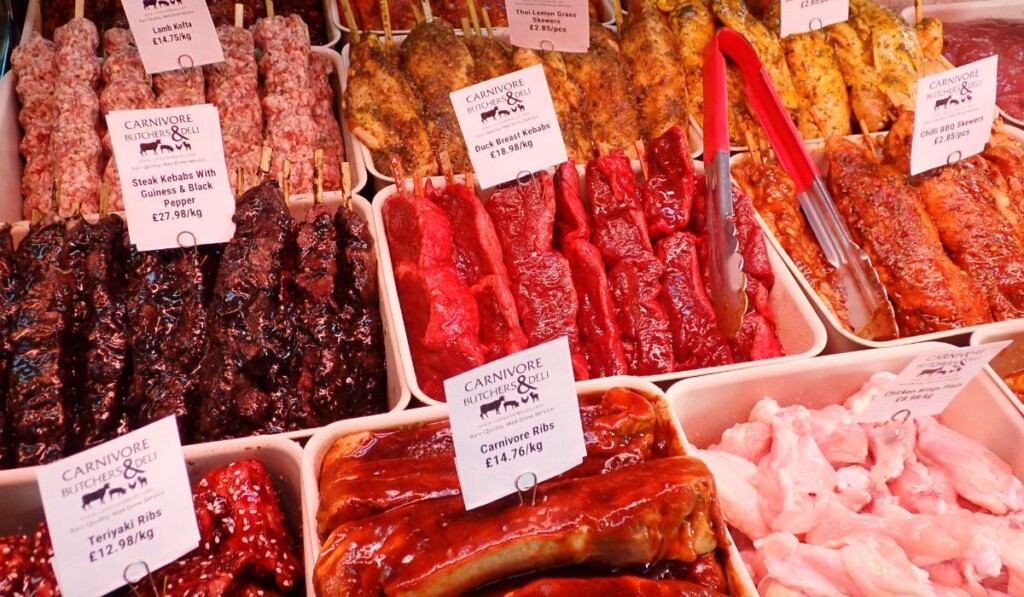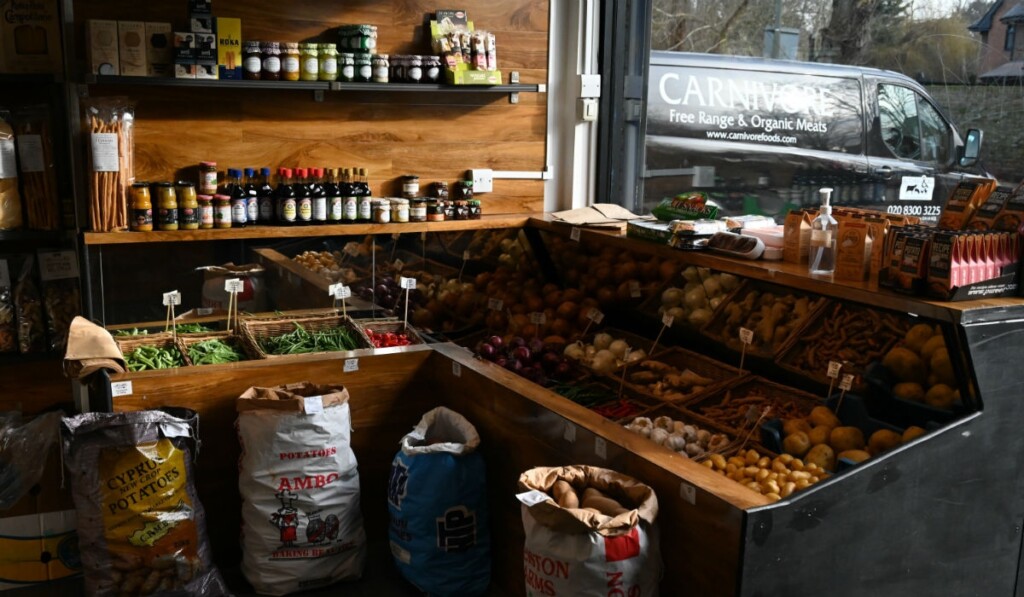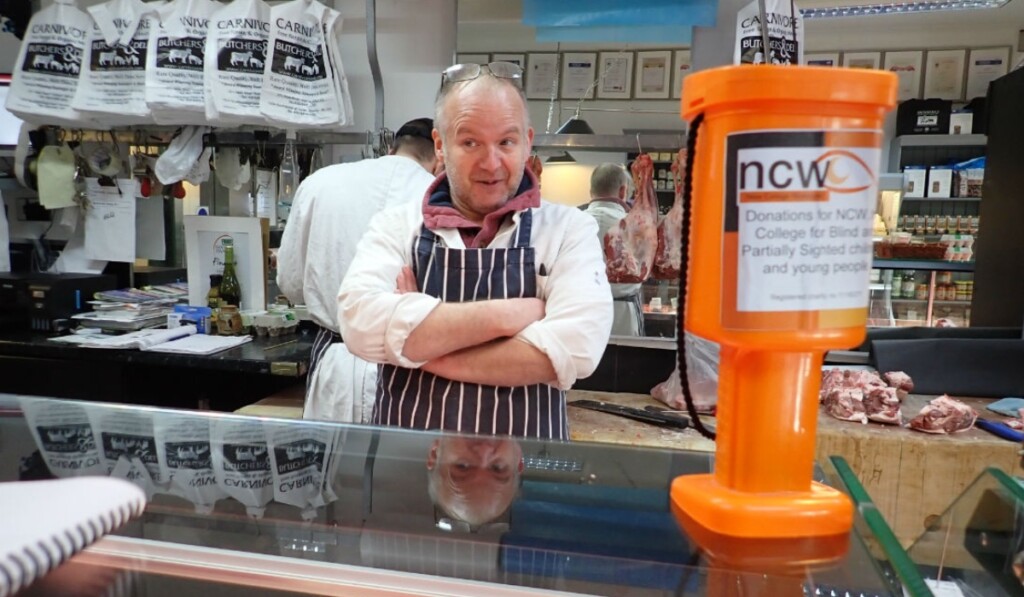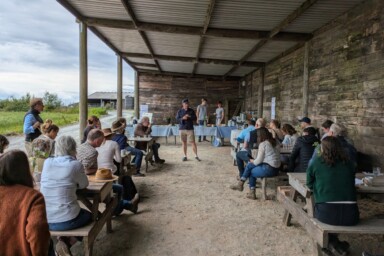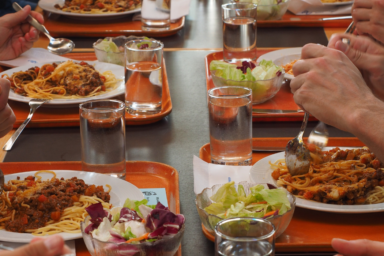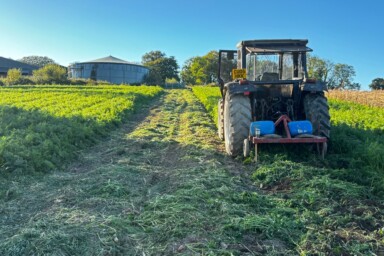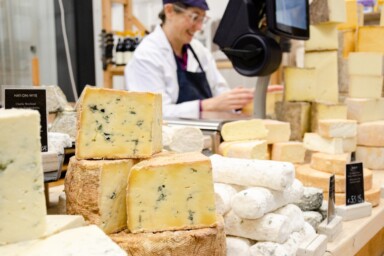In our series of butcher profiles, food and farming writer, Marianne Landzettel, meets butchers from across the UK who have built their business around high-welfare, sustainably produced meat. Here, we travel to Bromley to meet Richard Douglas, a member of National Craft Butchers, and owner of ‘Carnivore’ and ‘Herbivore’, who shares his path from paper delivery boy to renowned craft butcher.
He can’t recall the date or even what time of year it was. He only remembers walking down a seemingly endless hospital corridor, together with his wife and a team of five doctors. Once they reached his office, the consultant finally gave them the news – “your son has a brain tumour”.
“Your world is gone in an instant,” says Richard Douglas. Wearing a dark blue apron, his glasses pushed up on his forehead, he stands behind the counter of his butcher shop in Bromley and tells us about his now 16-year-old son Jake. And how, if it hadn’t been for Jake, he probably would never have opened his own shops – not the one in Sidcup, which will be 10 years old in September, nor this one in Bromley, which he took on five years ago.
Jake was three and a half when he started losing his balance and complaining about headaches. “He put his hands on his head and just shouted, ‘it hurts, it hurts’.” It took two months of visits to different doctors and a 12-week wait for an MRI, until they finally got the diagnosis. “It was exactly a week after my wife found out she was pregnant with our daughter Eve,” says Douglas. What followed were harrowing and desperate months: Jake had to undergo several surgeries until the neurosurgeons decided that his best chance was a newly developed treatment available only in Florida. Richard Douglas quit his job and took his family to the US for Jake’s three-month-long treatment.
At the time, Douglas was the manager at M. Moen & Sons in Clapham, south London, a well-known craft butcher’s shop. Among its customers were celebrity chefs like Jamie Oliver and Gary Rhodes. “They came for the quality we offered, and they knew that they could get everything they wanted – from ox cheeks to pig’s trotters and marrow bones,” says Douglas. “We often provided the meat for photo shoots for cookery books and for TV shows.”
Jake’s treatment in Florida was successful and upon the family’s return from the US, he continued to improve. Richard Douglas needed to get back to work to provide for his family. For several months, the then 39-year-old looked for a job suitable for a butcher with his qualification, training and experience, but none were even remotely appropriate. The family still lived in Sidcup, so when a nearby shop became vacant he decided to open his own butchery. He named it ‘Carnivore’.
Douglas grew up in Forest Hill in south London, but he does not come from a family of butchers. The introduction to butchery came through his older brother, who got talking to the local butcher while doing his paper round. The butcher offered him work on a Saturday, helping out, cleaning and serving customers. Richard took over the paper round, and when his brother finished school and gave up the job at the butchery, he again followed in his footsteps, leaving the paper round to his younger brother. From the start, Douglas took a keen interest in every aspect of the work at the butcher’s shop. By the time he was 15, he made sausages and basic cuts of meat. “I liked the work and the atmosphere in the shop, the banter, the camaraderie.”
His formal training as a butcher at Smithfield College included a slaughter course. But Douglas preferred butchery. “It is far more creative, you have to be innovative and develop new products, you work with spices and I love the retail side, dealing with customers. You don’t have that in slaughter.”
But by the time Richard Douglas was a fully trained butcher, butchery was in decline. Many High Street butchers were closing down because the owners retired and they had no successor. Others began buying in ready to sell freezer packs of meat – that saved labour costs, but it also meant that the type and quality of meat on offer was no different from what customers could get at the local supermarket. The businesses that not only survived but thrived were high-end craft butchers, and that was what Richard Douglas wanted to be.
His first job was at Frank Godfrey’s in Highbury Park, a family business since 1905. “I was really lucky because I learnt whole carcass butchery, that’s such an important skill and there are not a lot of places that still teach it,” says Douglas. Whole carcass butchery is the ability to break down a whole side of beef or a whole pig or lamb, making the best use of the meat and providing specific cuts demanded by chefs. At Frank Godfrey’s, Douglas worked as assistant manager until he got the opportunity to become manager at the high-end Kent & Sons butcher’s shop in St John’s Wood. From there, he eventually moved to M. Moen & Sons in Clapham.
Having worked with the very best craft butchers throughout his career, Douglas had a clear idea what he wanted for his own business: Carnivore sells only organic and free-range meat. He works directly with four famers, but because there is more demand for specific, high value cuts such as steaks, he has to buy in meat from wholesalers, too. There are a lot of factors that decide the quality of meat. Raising animals for meat is a skill – it’s about good husbandry and good feed but also about the life-long good care a farmer provides. But even the meat from an animal which had a good life can be of low quality, if it is not slaughtered humanely.
Long transport times, bad conditions in the holding pens at the abattoir and time pressure during slaughter, all this will have an effect on meat quality, says Douglas. “I can tell from looking at the carcass whether an animal was stressed right before or during slaughter,” says Douglas, “to me it’s obvious in the colour, the structure, the tension of the fibres and I will reject such meat.” In big slaughter facilities, it’s near impossible to slaughter animals stress-free, he says, “there is a lot of throughput, it causes pressure to manage a large number of animals in a minimum of time, they sense that and get stressed”. But there are fewer and fewer small abattoirs. One of the farmers that Douglas works with farms near Tunbridge. Until recently, this farmer could bring his animals to a nearby abattoir, the transport time was really short. But right before Christmas, the facility closed its doors; in future these animals, too, will have to be transported much further.
As we talk, I take in the atmosphere of the shop. It is easy to love a bakery with its delicious smells and beautifully decorated cakes. Carnivore has a different but equally sensuous aesthetic: steaks on the bone rest in a dry aging cabinet; long, thin smoked sausages hang over a wooden rod like a fringe curtain; there is a fresh, meaty, slightly smoky scent in the air; the display of marinated meats, skewers, sausages, spiced ground meat patties and ready to barbeque ribs is beautifully arranged; and on the large, wooden butcher’s block behind the counter lies a big bunch of rosemary, sprigs of which will be tied to some of the roasts.
The rosemary comes from Douglas’ other business, the greengrocer ‘Herbivore’ next door. Why does a butcher also sell fruit and veg? The shop in Sidcup is next door to a greengrocer, too, says Douglas. “It was a real draw for customers and when the owner decided to sell up, we were afraid the parade would look deserted. So, we took it on.” The combination of greengrocers and butchers works really well, he says. Customers buy meat and can easily pick up the herbs they might need or the vegetables to go with the meal, and the butchers have a steady supply of herbs and spices for the products they create. That’s why in Bromley, too, there is an Herbivore right next to the Carnivore butcher’s shop. In total, 16 staff, several of whom are family, work across both the butchers and the greengrocers. At present, the one butcher apprentice is Douglas’ nephew. It’s hard to interest young people in a career as a butcher, if they haven’t experienced what craft butchers actually do, says Douglas. He hopes that more young people will come into the trade and craft butchery becomes better recognised for what it is: a highly skilled and creative profession.
Considering the beautiful and sumptuous decor of the shop, the orange plastic donation box on the counter seems a little out of place. The money customers give goes to New College Worcester, a college for blind and partially sighted children and young people, which son Jake attends. The tumour damaged the optic nerve in both eyes and Jake has been registered blind since 2006. “But he is doing well,” says Douglas, “he has to have an MRI every six months and needs to take medication on a daily basis, but so far the tumour hasn’t come back.”
With thanks to National Craft Butchers for helping us to develop this series. To find out more, visit NationalCraftButchers.co.uk.
Photos by @M.Kunz.
